Fred Demara, the Great Imposter
Ferdinand Waldo Demara, commonly known as “Fred”, was born in Lawrence Massachusetts in the December of 1921. The family were fairly well off when he was born, but his father lost a lot of money in the Great Depression and the family had to move to a poor neighbourhood. One of the formative experiences in Fred’s young life came when he tricked a local sweetstore owner into giving him and his friends free chocolates. On another occasion he found a pair of artificial legs in a trashcan, and positioned them sticking out of a snowbank by the side of the road, hiding and laughing at the reactions of passing motorists. His father was a film projectionist (Fred’s uncle owned a chain of movie theatres) and so he grew up surrounded by images of actors. He was also a fairly devout young boy, and maintained a strong interest and belief in Christianity throughout his life.
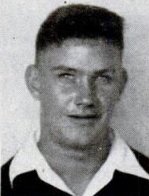
At the age of sixteen, Fred ran away from home. He headed south to Central Falls, a small town in Rhode Island. This small town was home to a Cistercian monastery [1] and young Fred Demara joined the monastery as a novice. The rule of the monks was that one had to be a resident for five or six years before taking vows, but after four years Fred left. He later said that the abbot of the monastery felt he was better suited for teaching out in the world rather than living in contemplation. With war on the horizon, he enlisted in the US army. He did not find the army half as congenial as the monastery, and after a year he deserted. As part of his desertion, for the first time he took on a false identity – that of an army buddy named Anthony Ignolia.
Under Anthony’s name he joined the US Navy instead. He was trained as a hospital corpsman, but when he realised this meant serving on the front lines he tried to forge the credentials that would let him enrol in officer training. The forgery was detected, and he was forced to go on the run again. He decided to return to monastic life at a Cistercian monastery in Louisville Kentucky, this time under the name of Robert Linton French. Doctor French was a real person, as Fred’s normal MO was to find a real person living in obscurity and gain copies of their documents by mail – birth certificates, university credentials etc. Nowadays we’d call this “social engineering”. As Robert French he travelled to Chicago and studied philosophy and ethics at DePaul University. He excelled at his studies, but when he found himself close to taking holy orders he got cold feet. Unwilling to take the vows as a fraud, and afraid to reveal his imposture to his colleagues, he decided to just vanish.
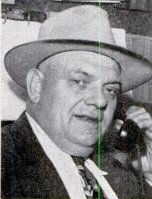
He resurfaced in Erie, Pennsylvania teaching psychology at a university, then moved to Los Angeles where he spent some time as an orderly in a sanitarium. Using French’s name and credentials he got another job teaching psychology in a university in Washington state. Though he had never really studied psychology, he just kept his own study a chapter ahead of his students in the textbook. He liked Washington State, and enjoyed the teaching, and made the mistake of getting comfortable. He became friends with the local Sheriff, Frank Tamblin. Sheriff Tamblin made him a special deputy, and Fred made speeches supporting the Sheriff’s bid for re-election. But one day the sheriff turned up with a warrant for Fred’s arrest. At the station, two FBI agents were waiting. Fred had been identified as a deserter, and he spent 18 months imprisoned at the US Disciplinary Barracks in San Pedro California.
After he was released from prison Fred returned home to Lawrence for a while, but the temptation to assume a new identity proved too much for him. This time he decided to become a biologist in Kentucky named Dr Cecil Hamann. Under this name Fred got a job at Massachusetts Eye and Ear, a Harvard-affiliated hospital that still exists and combines teaching, treatment and research. At the same time Fred also took night classes in law, though he only did the first year and didn’t get any qualifications. Fred was much more a believer in on-the-job training. At the same time he decided to leave Boston and headed north to Alfred, Maine.

In Maine he returned to the religious life. This time it was as part of a teaching order, the Brothers of Christian Instruction. The Brothers were delighted to welcome such a “highly qualified” man into the flock. The story even made the local papers, something which almost led to disaster for Fred. A student of the real Dr Hamann read the story and passed it on to him. Luckily Dr Hamann was a bit of a procrastinator, and never got round to reporting Fred to the authorities.
Fred did a lot of good work for the Brothers during his time with them – helping them to navigate the bureaucratic waters towards getting registered as an American college. Unsurprisingly he was very familiar with how they worked from having spent so long gaming the system. Prior to taking his vows he was sent to New Brunswick in Canada to study theology. There he became friends with the local GP, a man named Joseph Cyr. Fred claimed that they became friends when Dr Cyr was treating a monk for arthritis. He had heard that Fred had been a biologist before becoming a monk, and asked his device. Fred had read about bee venom being used to treat arthritis in a medical journal, and suggested that. It worked, and Dr Cyr’s respect for him rose enormously. Enough that when Fred was returning to Maine Dr Cyr made the mistake of asking him to take his credentials back with him. Dr Cyr hoped to gain an American medical license to go with his Canadian one. Of course, the credentials would never be delivered.
When Fred returned to Maine, he discovered that the Brothers had obtained their college charter. He also discovered that despite his hopes he had not been selected as head of the college. Angered by the snub, he “borrowed” one of their automobiles, drove to Boston, and got the bus straight back to New Brunswick. There he went into a Navy recruiting office and enlisted as a Naval surgeon using Dr Cyr’s credentials. In the spring of 1951 he was assigned to a naval base in Halifax for two months. While there he fell in love with a local girl, for the first and possibly only time in his life. The pair planned to get married after Fred finished his tour of duty. But at the time Canada was one of the nations involved in the Korean War, and in June Fred Demara sailed out on the Cayuga.
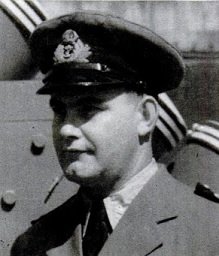
Fred’s duties on the Cayuga ranged from routine treatments and diagnoses up to small procedures like removing a bad tooth from the captain. Fred had never done any dentistry before, so he wound up stalling the captain while he quickly read up on the procedure. He managed it and his masquerade continued. His greatest test came once the ship arrived in Korea. A Korean ship brought three injured men on board. One of them had a bullet embedded in his chest close to his heart, and Fred would need to operate to remove it. He knew that conditions were far from ideal. The ship didn’t have the facilities to sterilise his implements, never mind that he had never operated before. Still, he went for it – relying on a principle of “the less cutting you do, the less patching up you have to do afterwards”. The operation was a success, and the Korean soldier’s life was saved. But it was the beginning of the end for Fred Demara.
When Fred went ashore in Korea he was horrified by the conditions and the lack of medical expertise available. His solid Christian charity compelled him to do something, and he got permission from the captain to do volunteer work with them. He soon became well known for this, and when a local military commander personally commended him, the ship’s radio officer decided to write something up for the dispatches. Fred tried to discourage him, but he couldn’t be too forceful as being mentioned in dispatches was a serious honour. The officer’s story, which included a dramatic retelling of the operation on the deck of the ship, caught the attention of the media corps and was passed on to the newspapers. The real Dr Cyr was very surprised to read about his heroics, and immediately contacted the authorities. Soon the captain of the Cayuga” was contacted, and though he insisted that there had to be some kind of mistake, he was still forced to send Fred back to Canada.
Fred’s time in the Canadian Navy was, as he would later put it, “the happiest time in his life”. Even after he was exposed, his shipmates sent him a Christmas card declaring that whatever his faults, they considered him their friend. After a lot of digging, the Canadian authorities uncovered his true identity. His masquerades as Hamann and French were also uncovered. With the strong recommendation from his captain that they show clemency, and not wanting any bad publicity, they decided the simplest thing to do was to deport him to America. We don’t know how Fred finished things with his fiancee, but we know that Fred never saw his Canadian girlfriend again.
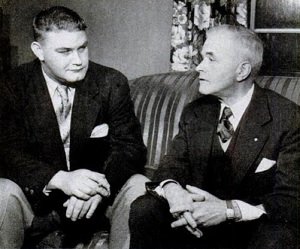
Fred once again fell back to his parents in Lawrence, where he was contacted by a journalist from LIFE magazine. Needing the money, Fred agreed to give them an interview. The story of the “fake Navy doctor” had already been in the papers, and Fred saw this as a chance to put his side of the story. In a move that would come back to haunt him, he also posed for multiple photos in the magazine. By the time the piece was printed, it had an addendum saying Fred had “disappeared once more, whether temporarily or for another exploit his family does not know”. In fact, Fred had gone on the road – working a series of jobs around the country, sometimes taking on a fake name to try and avoid questions but sometimes not. He also started drinking, driven mostly by guilt over the girl he’d disappointed in Halifax. He’d always been afraid of being discovered, not out of punishment but out of fear of what people would think of him. And now his fear had come true.
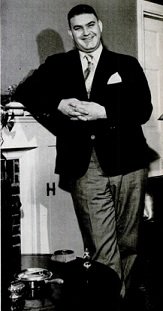
In Houston, Texas in 1955, Fred resurfaced as Dr Benjamin Jones, a professor from Mississippi. He applied to join the Texas Department of Corrections, using a canny strategy where he applied directly to the head of the wrong department, knowing the man would forward it on to the correct person, one OB Ellis. This lent his application some borrowed legitimacy and he was accepted. Asked for eight character references, he simply wrote them all himself. [2] Fred was accepted, and was initially assigned to be the lieutenant of the guard at one of the prison farms. However the harsh working conditions for the inmates and the open brutality and racism of the guards disturbed him too much, and he transferred to the prison recreation department.
There he did well enough to be made deputy warden of a new prison (“Shamrock”) designed to separate out the most violent inmates from the rest of the population. It was a tough assignment, but Fred (aided by his knowledge of psychology, complete lack of fear, and occasional surreptitious dose of tranquilisers to the prisoners) did extremely well at it. (He later joked “You might say it was Texas’ first hospital for the criminally insane.”) But it all came crashing down when one of the prisoners recognised him from his interview in LIFE magazine. Confronted by his boss, Fred denied everything. But as soon as he was out of the man’s sight, he headed to his room, grabbed everything he owned, got in his car and fled.

In the summer of 1956, Fred stepped off the ferry on North Haven Island in Maine. This time he was Martin Godgart, the new teacher at the local school. He taught the boys English and Latin, and was also active in the local community. People took a while to warm up to this stranger, but he soon became popular with them. But Fred was close to the breaking point. He was tired, and he started drinking again. One too many indiscreet comments aroused the suspicions of the locals, and the mother of one of the kids he taught ordered a copy of an old issue of LIFE magazine. With her suspicions confirmed, she tricked Fred into leaving his fingerprints on a glass and then sent them to the FBI. On February 14th, 1957, Fred was arrested and taken off the island. Luckily for him, the judge only gave him two months probation for not having a legitimate teacher’s license.
Fred’s actions over the next couple of years are somewhat unclear – there are rumours he spent six months in prison in Canada, though this is difficult to confirm. The New Haven incident closes out the biography of him written by Robert Crichton. It was called The Great Imposter, and was published in 1959. It was a bestseller and made Fred Demara a household name. He decided to take advantage of his newfound fame, and took up an offer to take a bit part in a Hollywood film called The Hypnotic Eye. It was a pretty standard horror movie (Fred was a surgeon, of course), and the main thing it taught Fred was that he didn’t like “real” acting. While he was in LA, he made an appearance on Groucho Marx’s gameshow, You Bet Your Life. It’s fascinating to be able to see Fred on film, joking to Groucho Marx about how he “acquired all his credentials” with the charm that had carried him through so many impersonations. In addition to plugging The Hypnotic Eye, Fred and his partner (a Brazilian woman named Carmen Phillips writing a book about how to marry an American) won $2000. Fred joked that he was donating his half to the “Feed And Clothe Fred Demara Fund.”
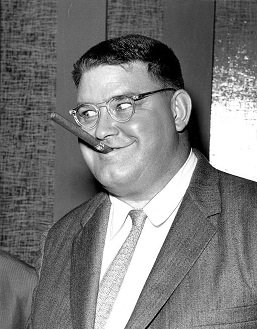
In 1961 The Great Imposter was released as a movie. Tony Curtis played Fred, to his displeasure. “He looks nothing like me,” he commented. By this time Fred (always a big man) had put on so much weight that it was affecting his health, and he was forced to give up his life of imposture. Instead he worked as a counsellor in a homeless shelter in downtown Los Angeles for several years. In 1967 he finally got some credentials of his own, getting a degree from a bible college in Oregon. With this he got a job as a chaplain in a hospital in Anaheim, California. In 1970 he was almost fired when his past was discovered, but since his name and credentials were real for once, the chief of staff vouched for him and he was allowed to keep his job. Fred was a popular chaplain, though he rarely discussed his past.
In 1980 he became too ill to continue working, and moved from chaplain to patient. [3] He died in 1982, aged only 60 years old, from complications due to diabetes. He was a remarkable man – charming and intelligent, adaptable and compassionate, with a photographic memory and a swift mind to match. Yet he squandered his talents on borrowing lives, and all his accomplishments were overshadowed by the crimes he committed to achieve them. In the end his life was a tragedy, and the greatest tragedy of all was that we never saw what The Great Imposter could have accomplished if he’d had the courage just to be himself.
Image source except where stated.
[1] Our Lady of the Valley Abbey, which burned down in 1950. The monks relocated to Spencer, Massachusetts and founded St Joseph’s Abbey, which remains there to this day. They support themselves nowadays by producing beer. This is a common practice for monks in Europe, but they are the only Cistercians (also known as “Trappists”) in America to do so.
[2] He used a pretty clever trick to make the references look legit. He would write to government departments in other states, making queries and including a “stamped, self-addressed envelope”. When the replies came back (with an out-of-state postmark), he’d open them up, put his reference inside, then erase the address (written in pencil) and replace it with Ellis’ address. Then he just dropped the bundle into a random in-tray in the office when he was in sorting out some point about his application, and relied on somebody blaming an inattentive mailboy and passing them on to Ellis.
[3] There’s a story that Fred gave Steve McQueen the last rites. Given that Fred was seriously ill in 1980 when McQueen died, and that McQueen died in a hospital in Mexico, this seems pretty unlikely.

Fred Demara lived in the next room to me in the men’s dorm, at Multnomah School of the Bible, in Portland Oregon. We started hearing incredible stories about him, but he was genuinely a Christian believer, and not pretending. I ended as a missionary in Europe, but 10 years ago became an atheist. Fred was the real deal.